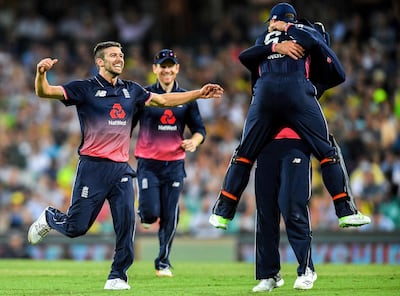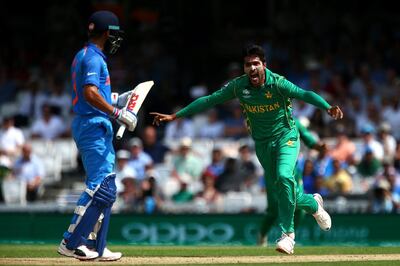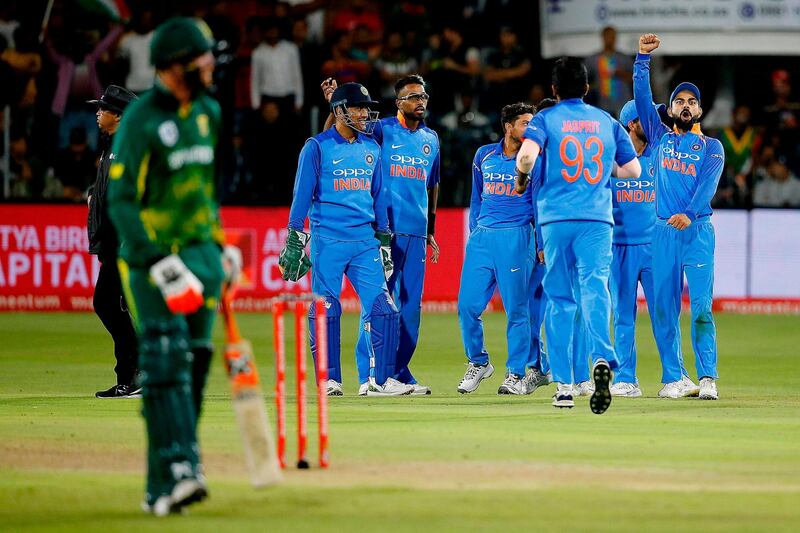With 465 days still to go before the 2019 Cricket World Cup gets under way, it will be foolhardy to make any predictions just yet. Nonetheless, 1,057 days since the game’s flagship tournament was last staged in 2015, we are beginning to see a gap emerge within the elite division of teams in the one-day game.
Cricket is hardly a global sport, unlike football, and fans do not have a large pool of title contenders to choose from. Indeed, over the past 25-plus years the best ODI teams – and by extension, the contenders – have usually included Australia, England, India, New Zealand, Pakistan, South Africa, Sri Lanka and West Indies. The rest are there merely to make up the numbers.
But at the moment, just by looking at statistics, this list gets narrowed down even further to two favourites – India and England – with South Africa and New Zealand not far behind. Surprisingly, Australia are unlikely to defend the trophy they won three years ago if the tournament was held this month. Teams like Pakistan, Sri Lanka and West Indies may struggle, too.
For starters, let us look at the ODI rankings table: India are No 1 with a rating of 123 – the result of a bump Virat Kohli's team received following their 5-1 series win over South Africa during the past fortnight. South Africa are second, on 117 points, after their pummelling at home.

Here's how we ended the series in style...
— England Cricket (@englandcricket) January 28, 2018
Scorecard: https://t.co/vb5ro8qttb #AUSvENG pic.twitter.com/WivuR3hYO6
England are a close third (116), their recent 4-1 thrashing of hosts Australia serving as a reminder of their resurgence. New Zealand are fourth (115), while Australia are a distant fifth (110).
A pertinent question to ask is why South Africa have less of a chance than England to win the cup when they are ranked one place higher than them. The simplistic answer is ‘momentum’.
ODI numbers collated from March 30, 2015 – the day after the last World Cup final – show the ascendance of India and England, and to a lesser extent that of New Zealand and South Africa.
During this period, India have won 39 of their 59 ODIs, giving them a win/loss ratio of 2.052. England have won one game less – winning 38 from 58 games – but their W/L ratio is higher – 2.375. New Zealand are third (33 from 57) with a W/L of 1.500, while South Africa are fourth (31 from 53) with a W/L of 1.476. Here also Australia are way behind, having won just 27 from 55 games – a W/L of 1.080.
Sample the series stats, and you will arrive at the same conclusion: India played 14 and won 10; England played 15 and won 10; New Zealand played 16 and won 9; South Africa played 13 and won 8; and Australia played 14 and won 8.
______________
Read more
West Indies challenge awaits triumphant UAE at the World Cup Qualifier
WCL Division 2 shows the World Cup should be inclusive, not exclusive
[ Forget promotion-relegation idea, just expand the Cricket World Cup ]
[ Courtesy ICC, money wins over meritocracy in world cricket today ]
______________

Another factor that makes England top contenders is home advantage. The tournament is scheduled to be held there from May 30 to July 14, and the fact Eoin Morgan’s side have won six of the seven series they have played in their backyard since March 2015 has to count for something.
Playing in England will also bring pleasant memories to three other teams. India won the Champions Trophy after beating the hosts in 2013 and reached the final of the 2017 edition. Pakistan will bank on the feel-good factor of winning the 2017 final against their arch-rivals to make up for underwhelming ODI numbers. Australia, too, have won in Old Blighty, giving England their only bilateral ODI series defeat in nearly three years.
Admittedly, star power is important – a factor that gives the teams below India and England some advantage.
For instance, four of the 10 top-ranked batsmen in the format are South African. In comparison just two play for India and one each represents England and New Zealand. Australia, South Africa and New Zealand have two players each among the 10 top-ranked bowlers, while there is one Indian and no England cricketer in it. England though, have three all-rounders in the top 10 in that category.
"It was a day where I felt really good" - @imVkohli reflects after breaking more records with yet another fantastic century in Centurion #SAvIND https://t.co/axTw33sR6e pic.twitter.com/sZF7OKvdC3
— ICC (@ICC) February 17, 2018
Having said that, others do not have the firepower or match-winning prowess of ODI specialists such as Kohli, MS Dhoni and Jasprit Bumrah (India), or Morgan, Joe Root and Jos Buttler (England).
But cricket is a team sport, and while there are questions that need to be asked of India (a threadbare middle order) and England (lack of bowling experience), they have both won matches by gelling well. In both their cases, the whole has proved to be greater than the sum of its parts.
Of course, there is no way to predict how the next few months will pan out, and we could be in for lots of ebbs and flows. But at this stage, there is little doubt as to which sides have laid down the markers and which sides are playing catch-up.






